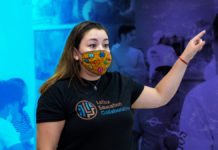Hispanic Heritage Month begins each year on September 15. The month begins on September 15 because this is the day five Latin American countries: Costa Rica, El Salvador, Guatemala, Honduras, and Nicaragua gained independence. Also, Mexico, Chile, and Belize’s independence days happen within Hispanic Heritage Month.
This month is an opportunity to shine a light on the achievements and stories of Latinos both past and present. Although there is a heightened focus from September 15 through October 15, students should see Latinos in their curriculum throughout the school year. This provides an opportunity for Latino students to see themselves, and it also gives students who are not Latino an opportunity to learn about the various backgrounds and diverse cultures of people who identify as Latino.
What gets overlooked, at times, is the diversity within the Latino culture. It is not only the diversity in the different countries where people are from in Latin America; this also includes racial identity. Some Latinos identify as Afro-Latino. Too many times, Afro-Latinos are an afterthought or not thought of at all. Being famous does not make this experience any better. Recently, five Afro-Latino celebrities: Gina Torres, Laz Alonso, Dasha Polanco, Sarunas J. Jackson, and Amara La Negra talked about the erasure of Afro-Latinos in Hollywood.
If celebrities are feeling erased in Hollywood, it has to be considered that Afro-Latino students might feel erased or overlooked during Hispanic Heritage Month. During this month it is important that achievements are highlighted from Latinos from different countries and racial backgrounds.
Anti-Blackness is real in the Latino community. During the summer, the Indiana Latino Expo provided tips to combat anti-Blackness in the Latino community. One of the tips was bringing visibility to Black Latinos. Educators can do this by intentionally including Afro-Latinos during both Hispanic Heritage Month and also during Black History Month and making sure they are included throughout the school year. Below are some resources educators can use as a starting point.
- 8 Afro Latinos Who Made Important Contributions to US History
- 28 Afro-Latino celebrities who are killing it in Hollywood
- Afro-Latino: A deeply rooted identity among U.S. Hispanics
- Afro-Latinos – “The history that they never taught us”
- Black Latinos Who Made US History, Impacted Popular Culture
- Celebrate Afro-Latinos in Spanish class
- Famous Afro-Latinos On What Their Identity Means To Them
- For National Hispanic Heritage Month, here are 7 Afro-Latino athletes we love
- A Hidden Identity: 10 famous Afro-Latinos to celebrate during Black History Month
- Latinx Heritage Month Resource Guide: Afro-Latinx Resources










